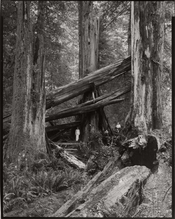snusmumriken
Subscriber
Has anybody else suspected that their ability to compose a photo is related to which eye they use?
I am left-eye-dominant, so I naturally hold my 35mm camera (telescope, microscope, loupe, etc) to my left eye. This has never been convenient, because I have quite a long nose, and it has to be squashed up behind the camera body, and I have to take the camera away from my face to wind on. About 8 years ago I started to wear vari-focal glasses full time, which made it extra difficult to get my left eye close enough to the viewfinder to see the bright line frame. So it became physically easier to use my right eye for the purpose, and I made that a habit. I even practised raising my camera to that eye until it was automatic.
Over time, though, I started to think I had lost any sense of composition. Even if everything else in a photo was OK, the contents just didn't balance. None of my photos satisfied me. Then one day I noticed that if I used my left eye, the image in the viewfinder immediately seemed more lively, provoking me to move it around - even millimetres - to get a pleasing arrangement. It would perhaps only take a second or less, and I was barely aware of the process, but it felt like resolving a chord on the piano.
I have no doubts about the correlation with eye-dominance in my case. I just wondered if any other forum member has had a similar experience?
(FWIW, although I am strongly left-eye-dominant, I am strongly right-handed, so I think that means there is some weird cross-wiring going on in the centre of my brain!)
I am left-eye-dominant, so I naturally hold my 35mm camera (telescope, microscope, loupe, etc) to my left eye. This has never been convenient, because I have quite a long nose, and it has to be squashed up behind the camera body, and I have to take the camera away from my face to wind on. About 8 years ago I started to wear vari-focal glasses full time, which made it extra difficult to get my left eye close enough to the viewfinder to see the bright line frame. So it became physically easier to use my right eye for the purpose, and I made that a habit. I even practised raising my camera to that eye until it was automatic.
Over time, though, I started to think I had lost any sense of composition. Even if everything else in a photo was OK, the contents just didn't balance. None of my photos satisfied me. Then one day I noticed that if I used my left eye, the image in the viewfinder immediately seemed more lively, provoking me to move it around - even millimetres - to get a pleasing arrangement. It would perhaps only take a second or less, and I was barely aware of the process, but it felt like resolving a chord on the piano.
I have no doubts about the correlation with eye-dominance in my case. I just wondered if any other forum member has had a similar experience?
(FWIW, although I am strongly left-eye-dominant, I am strongly right-handed, so I think that means there is some weird cross-wiring going on in the centre of my brain!)








